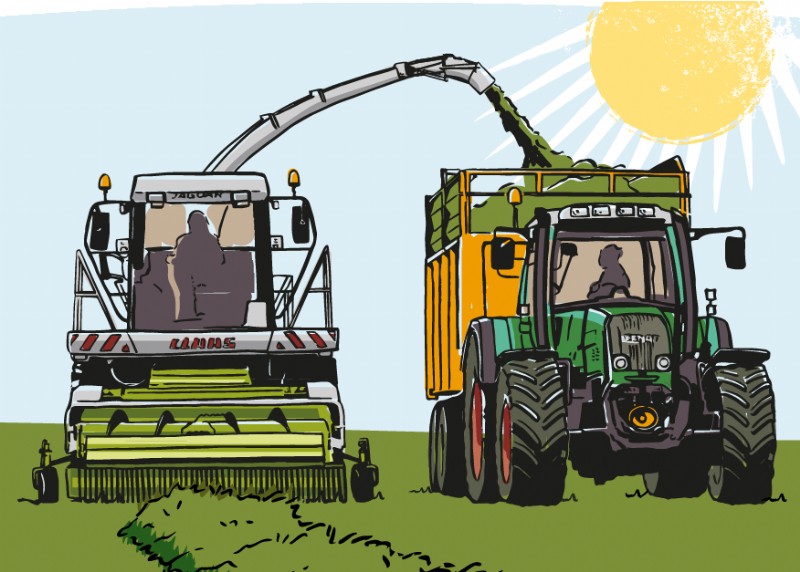

Suitable soils and optimum pH
Ryegrass is best suited to fertile and moisture- retentive soils and will tolerate slightly acidic pHs (6.2-6.5)
On thinner soils a Festulolium mixture may be a better option, current varieties generally have a maximum persistence of 2/3 years and should be thought of as short term options.
When to sow
Highest yields come from autumn sowings (August – September). Spring sown crops (March – May) are dependent on sufficient moisture and should be avoided in drought-prone areas.
The annual westerwold ryegrass is the only species that will provide a full yield from a spring sowing, on fertile soils it should provide 3 cuts depending on the time of sowing. Other silage leys may produce a slightly lower yield when spring instead of autumn sown.
How to sow
Sow into a fine, firm seedbed at 10- 20mm. If ploughing and power harrowing to create a seedbed, rolling with either a Cambridge roller before sowing is recommended to firm up the seed bed, break down clods and create a consistent tilth.
Broadcast seed should be harrowed lightly after sowing and before rolling. Rolling twice after sowing will improve seed to soil contact, reducing the likelihood of headlands establishing more quickly than the middle of the field due to the extra consolidation.
Management
When spring sown these leys can be ready for cutting after only 12 weeks. A further two cuts can follow on soils that have adequate moisture and N.
Early cuts just prior to heading will give high D-values and good regrowth. Cut earlier and frequently to encourage high D-value leafy growth. Graze excess growth by November to avoid winter kill.
Nutrient requirements
100kg N/ha for the first cut with 60-80 kg of N applied per subsequent cut. As cutting depletes P and K levels, these should be maintained at ADAS Index 2.
Yield potential
Westerwolds: 18t DM/ha, Italian ryegrass: 18t DM/ha, Hybrid ryegrass: 14t DM/ha, Perennial ryegrass: 13t DM/ha
Typical silage analysis has a dry matter of 30%, a crude protein of 16%, a D-value of 70 and an ME of 11MJ.
Date Posted: 18th January 2018




